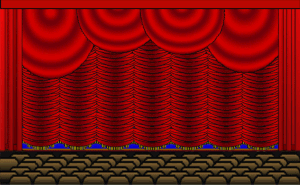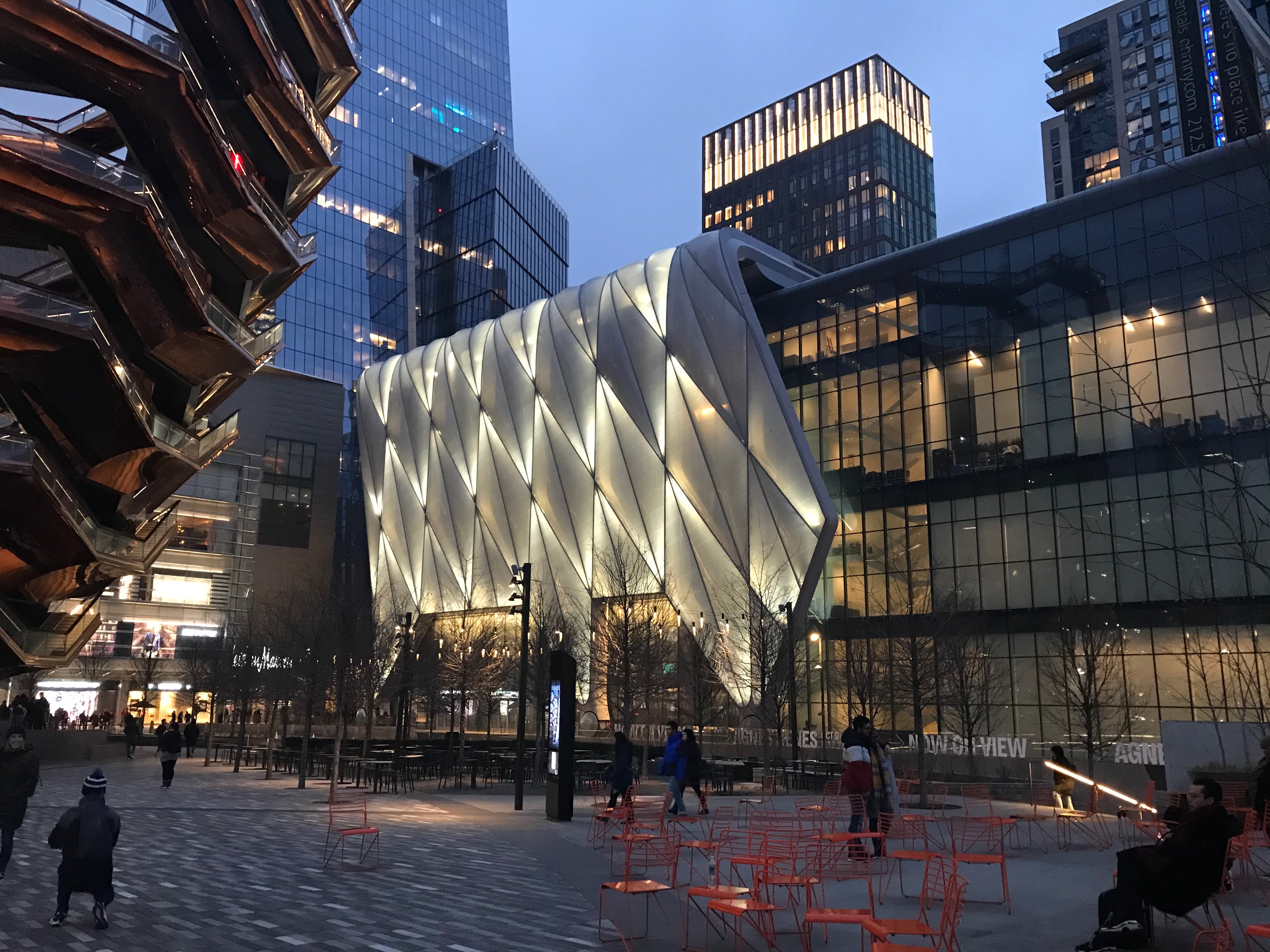|
Traveler Curtain
A traveler curtain, also called ''draw curtain'', ''bi-parting curtain'', or just ''traveler'', is the most common type of front curtain used in theaters. Traveler curtains remain at a fixed elevation and open and close horizontally, break up and meet in the middle, and consequently require a minimum of fly space. The curtains are typically made of velvet and decorated with a series of vertical box pleats along the top edge. Traveler curtains may be rigged with or without an operating line. When rigged with an operating line, they may be motorized or operated manually. They are referred to as ''walk-draw'' or ''walk-along'' curtains when rigged without an operating line. When opened and closed manually with an operating line, they are called ''manual'' curtains. They are the least costly kind of theater curtain to construct and relatively simple to operate. Construction Traveler curtains are suspended on a series of short chains called ''trim chains''. Each trim chain hangs f ... [...More Info...] [...Related Items...] OR: [Wikipedia] [Google] [Baidu] |
Front Curtain
A front curtain, also known as a (front-of-)house curtain, act curtain, grand drape, main curtain or drape, proscenium curtain, or main rag is the stage curtain or curtains at the very front of a theatrical stage, separating it from the house. The front curtain is usually opened at the beginning of a performance to reveal the stage set and closed for intermissions as well as the end of a performance. The most common material for the front curtain is a heavy velour material, often with pleated fullness sewn into the fabric to create a more opulent appearance. Types There are several styles of house curtains, which vary in construction, operation, and cost. Depending on a curtain's type, its fabric may be flat or pleated, and it may drape, hang, or do both. Some types open with the full curtain rising out, either via a fly system or by gathering upwards with lines; other types part in the centre and either travel horizontally on a track or are pulled out diagonally using lines ( ... [...More Info...] [...Related Items...] OR: [Wikipedia] [Google] [Baidu] |
Theater (structure)
A theater, theatre or playhouse, is a structure where theatre, theatrical works, performing arts and musical Concert, concerts are presented. The theater building serves to define the performance and audience spaces. The facility usually is organized to provide support areas for performers, the technical crew and the audience members, as well as the stage where the performance takes place. There are as many types of theaters as there are types of performance. Theaters may be built specifically for a certain types of productions, they may serve for more general performance needs or they may be adapted or converted for use as a theater. They may range from open-air amphitheaters to ornate, cathedral-like structures to simple, undecorated rooms or black box theaters. A theatre used for opera performances is called an opera house. A theater is not required for performance (as in site-specific theatre, environmental theater or street theatre, street theater), this article is about s ... [...More Info...] [...Related Items...] OR: [Wikipedia] [Google] [Baidu] |
Fly System
A fly system, or theatrical rigging system, is a system of rope lines, blocks (pulleys), counterweights and related devices within a theater that enables a stage crew to fly (hoist) quickly, quietly and safely components such as curtains, lights, scenery, stage effects and, sometimes, people. Systems are typically designed to fly components between clear view of the audience and out of view, into the large opening, known as the fly loft, above the stage. Fly systems are often used in conjunction with other theatre systems, such as scenery wagons, stage lifts and stage turntables, to physically manipulate the mise en scène. Theatrical rigging is most prevalent in proscenium theatres with stage houses designed specifically to handle the significant dead and live loads associated with fly systems. Building, occupational safety, and fire codes limit the types and quantity of rigging permitted in a theatre based on stage configuration. Theatrical rigging standards are developed ... [...More Info...] [...Related Items...] OR: [Wikipedia] [Google] [Baidu] |
Velvet
Weave details visible on a purple-colored velvet fabric Velvet is a type of woven tufted fabric in which the cut threads are evenly distributed, with a short pile, giving it a distinctive soft feel. By extension, the word ''velvety'' means "smooth like velvet". In the past, velvet was typically made from silk. Today, velvet can be made from linen, cotton, wool and synthetic fibers. Construction and composition left, Illustration depicting the manufacture of velvet fabric Velvet is woven on a special loom that weaves two thicknesses of the material at the same time. The two pieces are then cut apart to create the pile effect, and the two lengths of fabric are wound on separate take-up rolls. This complicated process meant that velvet was expensive to make before industrial power looms became available, and well-made velvet remains a fairly costly fabric. Velvet is difficult to clean because of its pile, but modern dry cleaning methods make cleaning more feasible. Velvet ... [...More Info...] [...Related Items...] OR: [Wikipedia] [Google] [Baidu] |
Box Pleat
A pleat (plait in older English) is a type of fold formed by doubling fabric back upon itself and securing it in place. It is commonly used in clothing and upholstery to gather a wide piece of fabric to a narrower circumference. Pleats are categorized as ''pressed'', that is, ironed or otherwise heat-set into a sharp crease, or ''unpressed'', falling in soft rounded folds. Pleats sewn into place are called tucks. Types Accordion Accordion pleats or knife pleats are a form of tight pleating which allows the garment to expand its shape when moving. Accordion pleating is also used for some dress sleeves, such as pleating the end of the elbow, with the fullness of the pleat gathered closely at the cuff. This form of pleating inspired the "skirt dancing" of Loie Fuller. Accordion pleats may also be used in hand fans. Box Box pleats are knife pleats back-to-back, and have a tendency to spring out from the waistline.Picken, Mary Brooks, ''The Fashion Dictionary'', p. 257 They ha ... [...More Info...] [...Related Items...] OR: [Wikipedia] [Google] [Baidu] |
Traveller Curtain Device
Traveler(s), traveller(s), The Traveler(s), or The Traveller(s) may refer to: People Generic terms *One engaged in travel *Explorer, one who searches for the purpose of discovery of information or resources *Nomad, a member of a community without fixed habitation *Showman, or funfair traveller *Tourist, one who travels for pleasure or business Specific groups * Romani people, or Roma, or Gypsies, and their subgroups in various countries * Indigenous Norwegian Travellers * Irish Travellers Individuals * List of people known as the Traveller * "The Traveller", pen name of Billy Pinnell (died 1977), sports editor of the ''Bristol Evening Post'' from 1932 to 1956 Arts and entertainment Fictional characters * The Traveler (''Star Trek'') * The Traveller (James Herbert) * Travellers, in the novel '' Earthworks'' by Brian Aldiss * Travelers, in D.J. MacHale's ''Pendragon'' novel series *''The Traveler'', in the video game ''Destiny'' Films * ''The Traveler'' (1974 film), an Irani ... [...More Info...] [...Related Items...] OR: [Wikipedia] [Google] [Baidu] |
Chain
A chain is a serial assembly of connected pieces, called links, typically made of metal, with an overall character similar to that of a rope in that it is flexible and curved in compression but linear, rigid, and load-bearing in tension. A chain may consist of two or more links. Chains can be classified by their design, which can be dictated by their use: * Those designed for lifting, such as when used with a hoist; for pulling; or for securing, such as with a bicycle lock, have links that are torus shaped, which make the chain flexible in two dimensions (the fixed third dimension being a chain's length). Small chains serving as jewellery are a mostly decorative analogue of such types. * Those designed for transferring power in machines have links designed to mesh with the teeth of the sprockets of the machine, and are flexible in only one dimension. They are known as roller chains, though there are also non-roller chains such as block chains. Two distinct chains can be co ... [...More Info...] [...Related Items...] OR: [Wikipedia] [Google] [Baidu] |
I-beam
An I-beam, also known as H-beam (for universal column, UC), w-beam (for "wide flange"), universal beam (UB), rolled steel joist (RSJ), or double-T (especially in Polish language, Polish, Bulgarian language, Bulgarian, Spanish language, Spanish, Italian language, Italian and German language, German), is a beam (structure), beam with an or -shaped cross section (geometry), cross-section. The horizontal elements of the are flanges, and the vertical element is the "web". I-beams are usually made of structural steel and are used in construction and civil engineering. The web resists shear forces, while the flanges resist most of the bending moment experienced by the beam. The Euler–Bernoulli beam equation shows that the I-shaped section is a very efficient form for carrying both bending and shearing (physics), shear loads in the plane of the web. On the other hand, the cross-section has a reduced capacity in the transverse direction, and is also inefficient in carrying torsion ( ... [...More Info...] [...Related Items...] OR: [Wikipedia] [Google] [Baidu] |
Guillotine
A guillotine is an apparatus designed for efficiently carrying out executions by beheading. The device consists of a tall, upright frame with a weighted and angled blade suspended at the top. The condemned person is secured with stocks at the bottom of the frame, positioning the neck directly below the blade. The blade is then released, swiftly and forcefully decapitating the victim with a single, clean pass so that the head falls into a basket or other receptacle below. The guillotine is best known for its use in France, particularly during the French Revolution, where the revolution's supporters celebrated it as the people's avenger and the revolution's opponents vilified it as the pre-eminent symbol of the violence of the Reign of Terror. While the name "guillotine" itself dates from this period, similar devices had been in use elsewhere in Europe over several centuries. The use of an oblique blade and the stocks set this type of guillotine apart from others. The display o ... [...More Info...] [...Related Items...] OR: [Wikipedia] [Google] [Baidu] |





